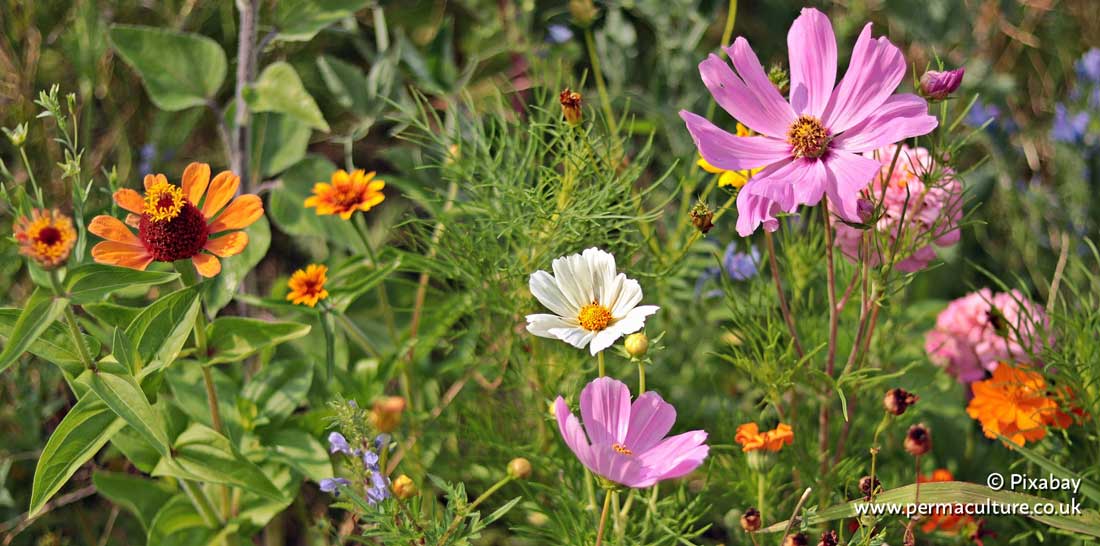These herbs are easy to grow, and provide a valuable source of food for bees and other pollinating insects. They are also great for cooking with, and growing your own herbs saves you money too. Plant a variety of herbs to flower with every season, and you’ll be helping lots of different bees to find nectar and pollen throughout the year.
Join the Great British Bee Count, 17 May-30 June. Learn more about bees and how to help them this summer. Download the free Great British Bee Count app, which includes a fab bee-friendly plant guide: www.greatbritishbeecount.co.uk
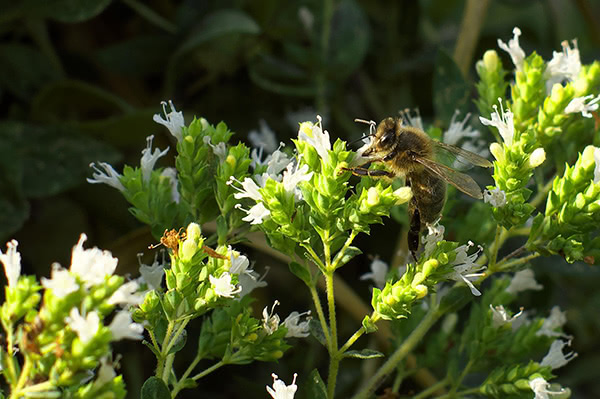
This aromatic herb produces pinkish-white drifts of nectar-rich flowers, and comes alive with bumblebees, honeybees, leafcutter bees and furrow bees in the summer. It will still be flowering in September. Marjoram is also a brilliant herb for the kitchen because it’s so versatile and tastes great in lots of different dishes.
Flowering season: Summer and early autumn
Varieties: Look for Origanum vulgare, the marjoram that grows wild in the UK. Pot marjoram is usually a neater growing version, and sweet marjoram (Origanum majorana) is also widely available.

Mint is very easy to grow. It’s a good idea to put it in a pot on its own, because it can invade the space of other plants if left unchecked. The flowers attract bees from mid-summer onwards. If you have a pond try growing water mint (Mentha aquatica), as bees and hoverflies seem to particularly love this, and it can be used in cooking just the same as other mints.
Flowering season: Summer and early autumn
Varieties: Try spearmint (Mentha spicata) for the traditional minty taste, peppermint (Mentha x piperita), which has a slightly stronger flavour, and apple mint (Mentha suaveolens).
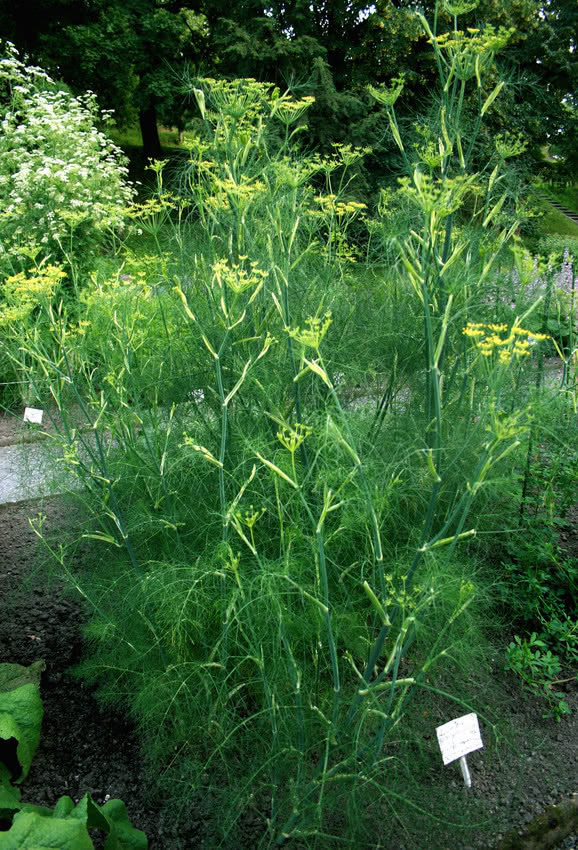
© Wiki
The bright yellow flowerheads of fennel are rich in nectar and pollen, and will attract a variety of pollinating insects including mining bees, yellow-faced bees, bumblebees and honeybees. The fennel herb is related but slightly different to bulb or Florence fennel, the white vegetable, but has the same aniseed flavour and produces aromatic seeds after the flowers have finished. Fennel can grow quite tall so if you have space for it to get big, it’s well suited to a sunny spot at the back of a border.
Flowering season: Mid to late summer
Varieties: Foeniculum vulgare. Bronze-leaved varieties are edible too.
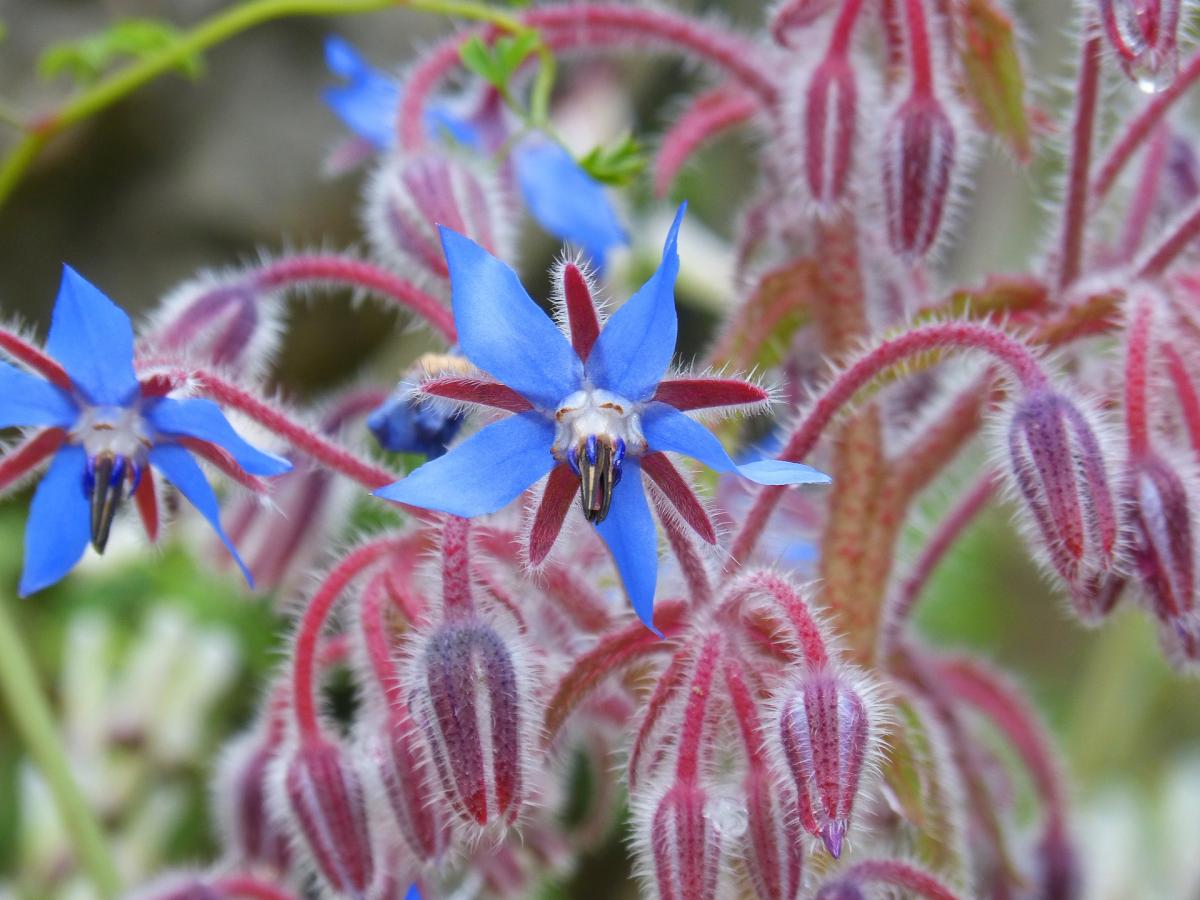
© Pixabay
An easy-to-grow annual, also known as ‘starflower’, that keeps on flowering for many months. The bumblebees and honeybees absolutely love borage because the flowers are very rich in nectar. The bright blue blooms are relatively shallow so they attract bees with short tongues, like the buff-tailed bumblebee. Both the flowers and the leaves are edible. Leave some flowers for the bees though!
Variety:Look for the annual Borago officinalis, which self-seeds, so you shouldn’t need to buy more plants each year.
©Linda Brown / Great British Bee Count
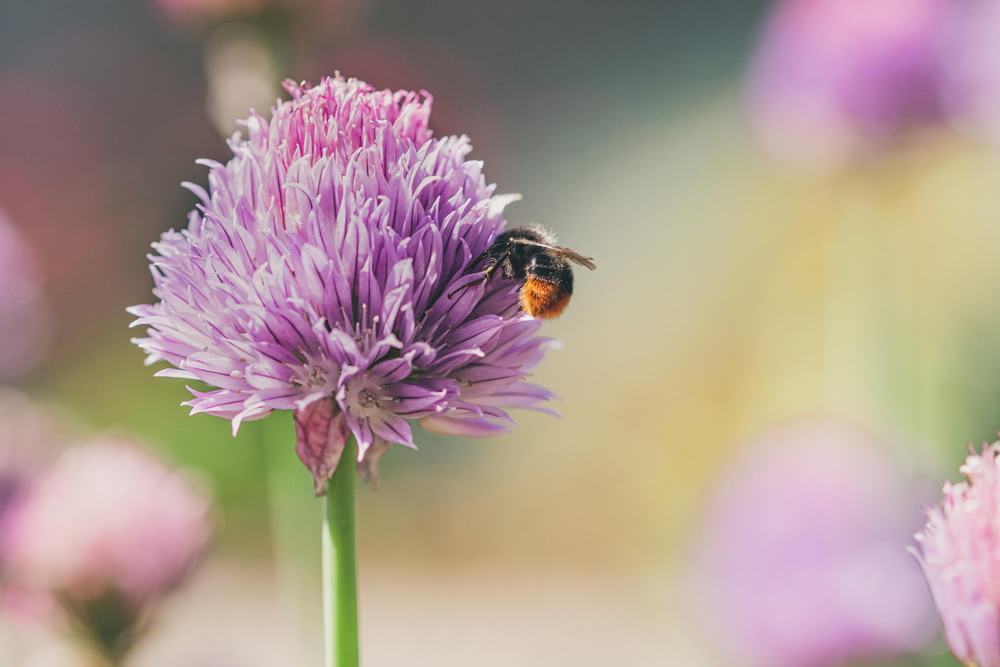
Chives are easy to grow in pots or a window box. They are best used fresh, snipped with scissors at the base of the plants to encourage more leaves to grow. Let your chives flower and they will provide welcome nectar for bumblebees, honeybees, mason bees and leafcutter bees. The pretty purple flowers can also be eaten and used to add a splash of colour to salads – but leave some for the bees to visit too.
Variety: Allium schoenoprasum or try Allium tuberosum, which has a delicate garlic flavour.
Flowering season: Spring and summer
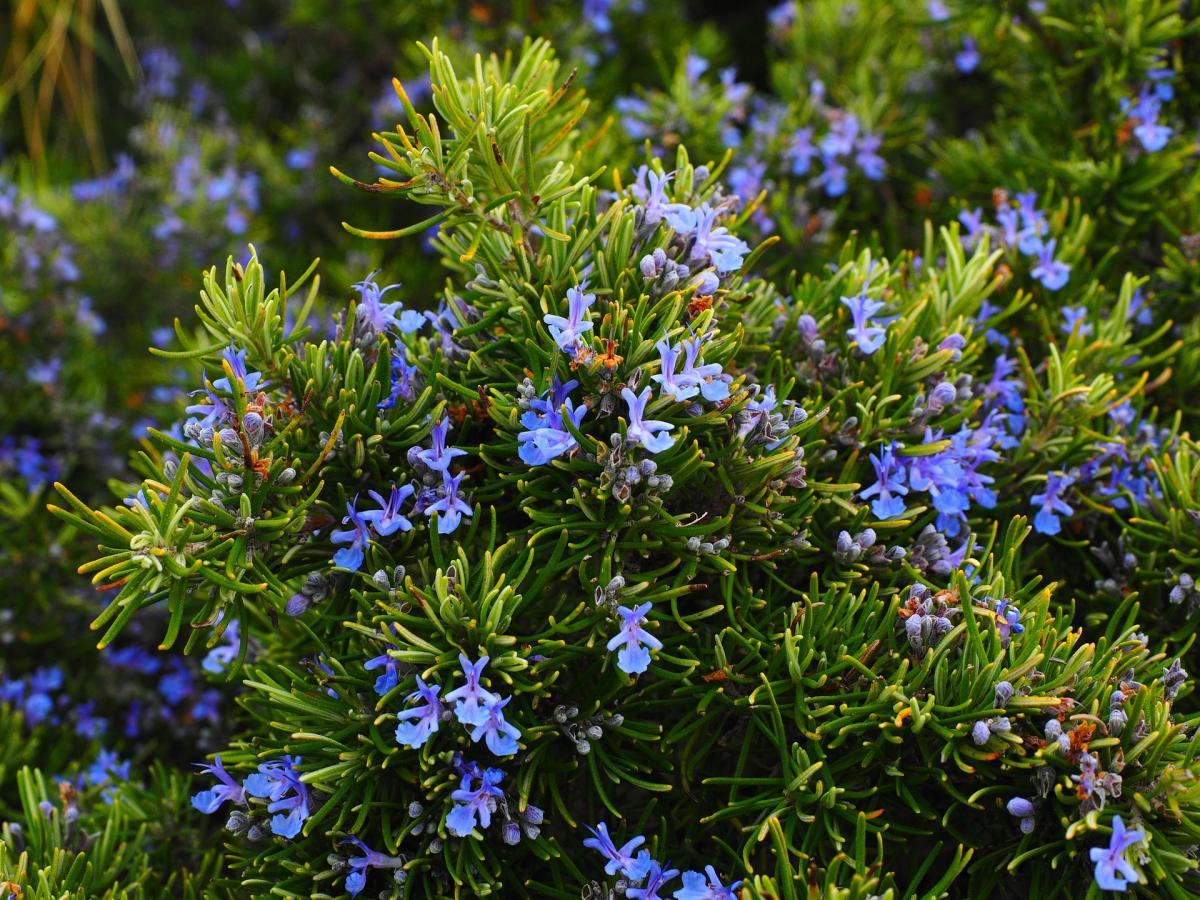
© Pixabay
This hardy and drought-tolerant herb can be harvested all year round for the fresh needles. It also has a long flowering season, with the flared blue-purple flowers attracting mason bees, flower bees, bumblebees and honeybees. Rosemary can grow into a large bush, so if you are short of space try growing creeping rosemary in a pot, in a sunny position.
Varieties: Look for Rosmarinus officinalis or creeping rosemary (Rosmarinus officinalis prostratus).
Flowering season: Starts flowering in spring and can continue to flower throughout the year, sometimes even in winter.

The purple spikes of tubular flowers on both edible and ornamental sage are popular with leafcutter bees and long-tongued species such as the garden bumblebee. Fresh, edible sage is a world apart from the dried herb you might have come across in stuffing, and the leaves are available to pick pretty much all year round if the plants are kept in a sheltered spot.
Flowering season: Late spring, summer
Varieties: There are many different varieties of Salvia to choose from which are great at attracting bees. Try common sage (Salvia officinalis) for cooking.
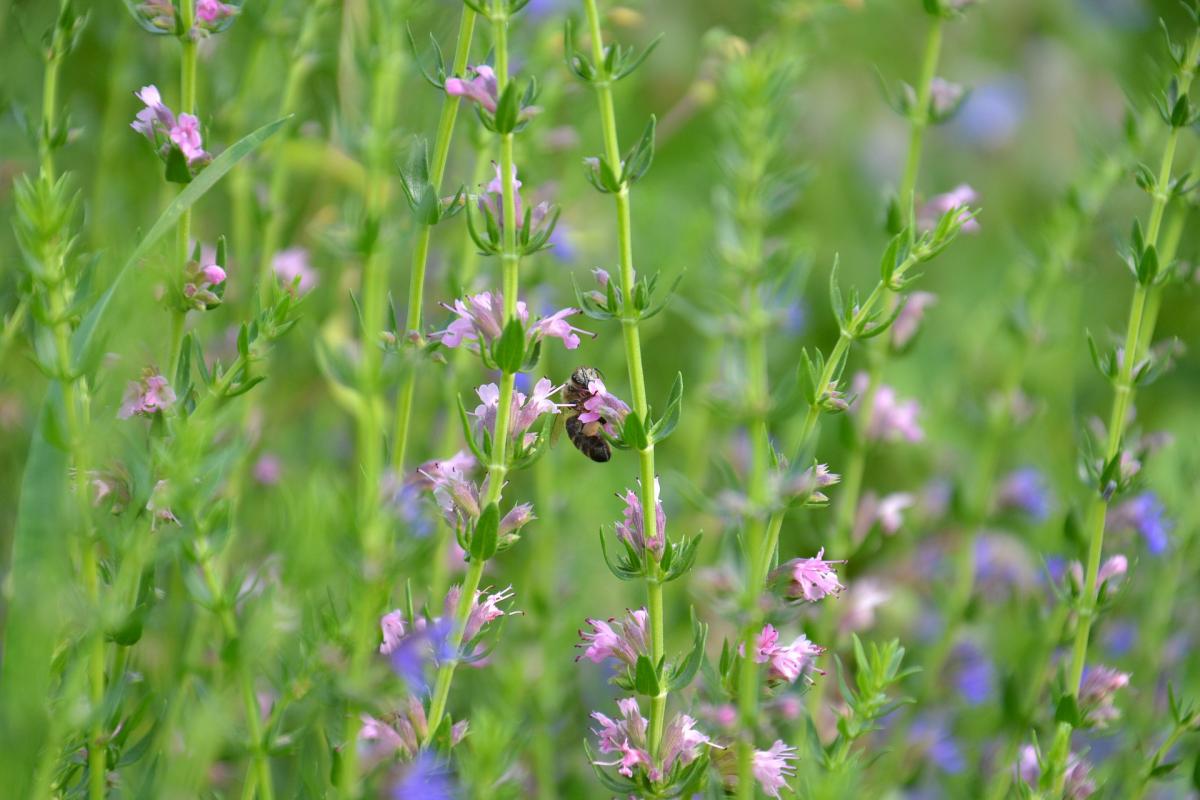
© Pixabay
A magnet for bumblebees, butterflies and other pollinators, hyssop is a lesser-known aromatic herb which displays beautiful blue flowers from July onwards. It thrives in sunshine and tolerates drought. The flavour of the leaves is strong, and rather like a cross between mint and sage. The deep flowers suit longer-tongued bees, including garden bumblebees and wool carder bees.
Flowering season:Summer and early autumnVariety: Hyssopus officinalis
![]()
© MaxPixel
If you love lemons, you’ll love lemon balm – the smell of the leaves crushed between your fingers is delicious. This plant is incredibly easy to grow, and like mint, benefits from being in its own pot because it will spring up everywhere. The plant was actually named in honour of honey bees: Melissa means bee in Greek, which in turn comes from Meli (honey). Honeybees and bumblebees, particularly common carder bees, flock to the tiny creamy-white flowers.
Flowering season:Summer
Variety: Melissa officinalis

Grow a herb ‘carpet’ – plant thyme amongst cracks in paving or along the sides of a path and enjoy the aroma when you walk on it. It also works just as well growing in a pot. Fantastic for honeybees, bumblebees, mason bees and leafcutter bees. There are many different varieties of thyme to choose from – some taste better than others.
Flowering season: Summer
Varieties: Thymus vulgaris (common thyme). Thymus polytrichus subs. britannicus attracts lots of bumblebees.
Why not add a diversity of plants for you and the bees, as well as other wildlife, by creating a ‘forager’s garden’. Anna Locke tells you how in The Forager’s Garden, available HERE.




